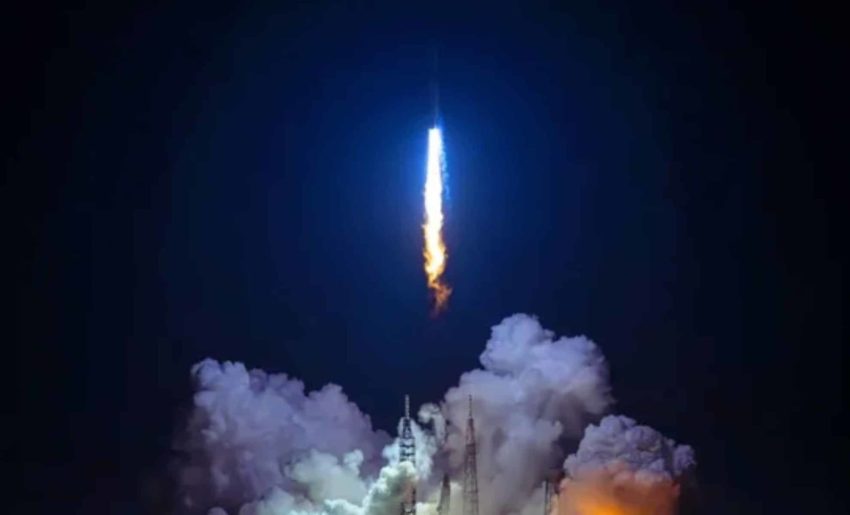Blue Origin’s New Glenn Takes on Mars with a Groundbreaking Mission
Blue Origin is preparing for its second flight of the New Glenn rocket, a significant step in the company’s journey toward deep space exploration. This mission, known as NG-2, will carry NASA’s ESCAPADE satellites to Mars, marking the first interplanetary mission for New Glenn and the first multi-spacecraft orbital science mission to study the Martian magnetosphere. The launch, set to take place from Cape Canaveral’s LC-36, represents a bold leap forward after delays in 2024 due to concerns about the rocket’s readiness.
A Mission to Study Mars’ Magnetic Field
The ESCAPADE mission involves two satellites designed to explore how solar winds interact with Mars’ magnetic field. These twin spacecraft, built by Rocket Lab, are engineered to map the Martian magnetosphere—a region where solar winds and planetary magnetic fields collide. This research is expected to provide critical data on how Mars’ atmosphere evolved, potentially offering insights into the planet’s past habitability and future colonization prospects.
NASA’s Nicky Fox, associate administrator for science, emphasized the importance of this mission: “This mission can help us study the atmosphere at Mars—key information as we explore farther and farther into our solar system and need to protect astronauts and spacecraft from space weather.” Understanding the Martian space weather environment is vital for long-term human exploration and the development of robust, radiation-shielded spacecraft.
Blue Origin’s Ambitions and Strategic Goals
For Blue Origin, NG-2 is more than just another launch—it’s a statement of capability. Success here would bolster the company’s standing in NASA’s Artemis program, where it’s already contracted to develop Blue Moon lunar landers, including a human landing system for Artemis V. It also plays a strategic role in national security spaceflight: the U.S. Space Force requires at least two successful orbital launches before certifying a rocket for defense missions, and New Glenn is inching closer to that threshold.
Blue Origin has invested heavily in the infrastructure to support this mission. Manufacturing for New Glenn is centralized at Rocket Park on Merritt Island, near Kennedy Space Center, while final launch prep occurs at Launch Complex 36, a site with a storied history dating back to the 1960s lunar missions. The company’s $1 billion investment into the site reinforces its long-term commitment to Florida-based launches and highlights its rivalry with SpaceX and United Launch Alliance (ULA).
Technical Specifications and Market Position
New Glenn stands at 321 feet tall, dwarfing Blue Origin’s earlier New Shepard suborbital rocket. Its seven BE-4 engines generate 3.85 million pounds of thrust, making it more powerful than ULA’s Atlas V and more than double the power of SpaceX’s Falcon 9. In terms of payload capacity, New Glenn also leads with a 23-foot-diameter payload fairing, offering the most generous cargo volume among commercial rockets.
These technical specifications signal Blue Origin’s ambition to become not just a player but a leader in the heavy-lift spaceflight market. Alongside government missions, the rocket will also serve commercial interests, including Amazon’s Project Kuiper, which has already contracted at least 12 launches to deploy an internet satellite constellation aimed at challenging Starlink.
Reusability and Future Prospects
Reusability is a cornerstone of New Glenn’s design, aiming for up to 25 flights per booster—an approach that mirrors SpaceX’s Falcon 9. During the first launch, Blue Origin attempted to recover the booster but was unsuccessful. Now, the company is hoping to land and recover its booster for the first time on the vessel “Jaclyn,” named after Jeff Bezos’ mother.
CEO Dave Limp expressed his enthusiasm on social media: “This will be an exciting mission for New Glenn and Mars exploration. ESCAPADE is not only New Glenn’s first interplanetary mission, it’s also the first multi-spacecraft orbital science mission to study the Martian magnetosphere. And, we hope to land and recover our booster for the first time. Mars, here we come.”
With this mission, Blue Origin is setting its sights on a future where commercial spaceflight plays a pivotal role in exploring and understanding our solar system. The success of NG-2 could pave the way for more ambitious missions, solidifying Blue Origin’s position as a key player in the evolving landscape of space exploration.
